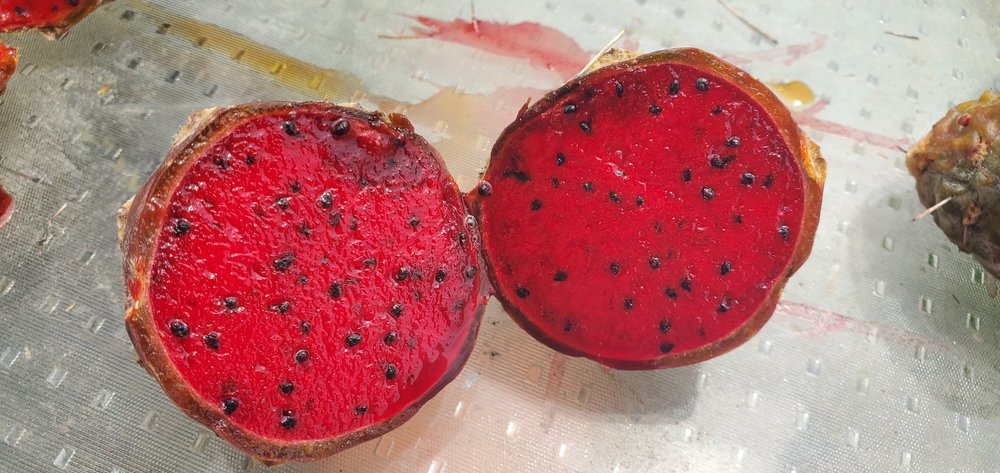
Stenocereus Pruinosus ( Oaxacan Pitaya )
Stenocereus pruinosa, commonly known as Oaxacan Pitaya, is a striking columnar cactus native to the arid regions of Mexico, particularly in Oaxaca, growing to heights of 10-20 feet (3-6 meters) with multiple ribbed stems that can reach up to 4 inches (10 cm) in diameter. This cactus thrives in hot, dry climates, preferring temperatures between 70°F and 100°F (21°C to 38°C) and can endure extreme heat, although it is sensitive to frost and should be protected from temperatures below 32°F (0°C). Propagation occurs through seeds or cuttings, and it requires well-draining sandy soil with minimal watering, allowing the soil to dry completely between sessions. In late spring to early summer, it produces large, fragrant white flowers that bloom at night, attracting nocturnal pollinators like bats and moths. After flowering, the cactus bears sweet, edible fruits known as pitayas, featuring a vibrant reddish or purplish exterior and juicy flesh, which are typically harvested in late summer. As a member of the Cactaceae family, Stenocereus pruinosa is well-adapted to store water in its thick, succulent stems, allowing it to thrive in its harsh desert habitat.